Home > Article > Backend Development > Complete code demonstration of document parsing using Python and OCR (code attached)

Document parsing involves examining the data in the document and extracting useful information. It can reduce a lot of manual work through automation. A popular parsing strategy is to convert documents into images and use computer vision for recognition. While Document Image Analysis refers to the technology of obtaining information from the pixel data of an image of a document, in some cases there is no clear answer to what the expected results should be (text, images, charts, numbers, Tables, formulas...).
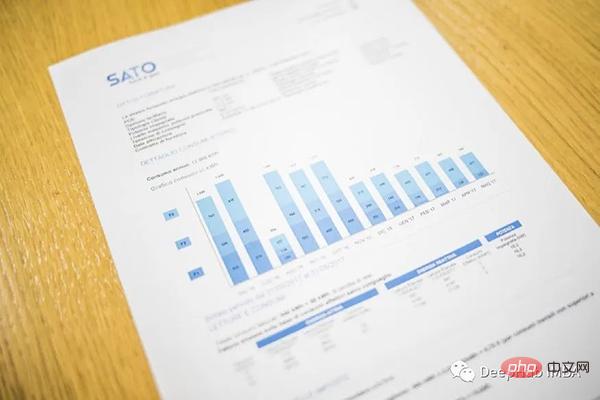
OCR (Optical Character Recognition) is the process of detecting and extracting text in images through computer vision. It was invented during World War I, when Israeli scientist Emanuel Goldberg created a machine that could read characters and convert them into telegraph codes. By now the field has reached a very sophisticated level, mixing image processing, text localization, character segmentation and character recognition. Basically an object detection technique for text.
In this article I will show how to use OCR for document parsing. I'll show some useful Python code that can be easily used in other similar situations (just copy, paste, run) and provide a full source code download.
Here we will take the financial statements in PDF format of a listed company as an example (link below).
https://s2.q4cdn.com/470004039/files/doc_financials/2021/q4/_10-K-2021-(As-Filed).pdf
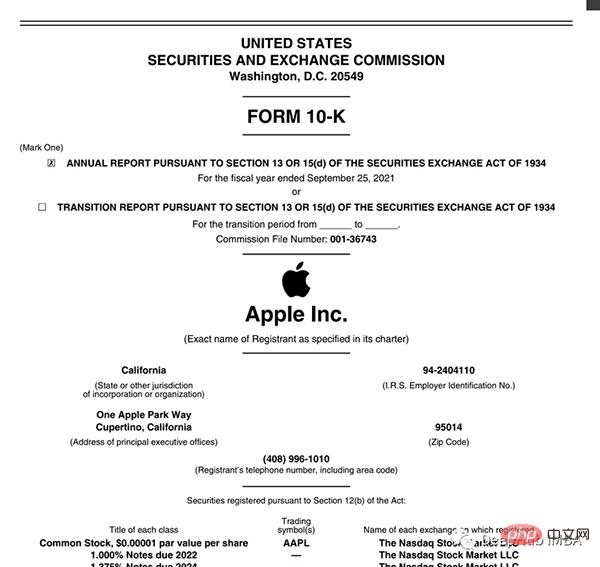
Detect and extract text, graphics, and tables from this PDF
The annoying part of document parsing is , there are so many tools for different types of data (text, graphics, tables) but none of them work perfectly. Here are some of the most popular methods and packages:
Maybe you will ask: "Why not process the PDF file directly, but convert the pages into images?" You can do this. The main disadvantage of this strategy is the encoding issue: documents can be in multiple encodings (i.e. UTF-8, ASCII, Unicode), so conversion to text may result in data loss. So in order to avoid this problem, I will use OCR and convert the page to an image with pdf2image. Note that the PDF rendering library Poppler is required.
# with pip pip install python-poppler # with conda conda install -c conda-forge poppler
You can read the file easily:
# READ AS IMAGE
import pdf2imagedoc = pdf2image.convert_from_path("doc_apple.pdf")
len(doc) #<-- check num pages
doc[0] #<-- visualize a pageIt is exactly the same as our screenshot. If you want to save the page image locally, you can use the following code:
# Save imgs import osfolder = "doc" if folder not in os.listdir(): os.makedirs(folder)p = 1 for page in doc: image_name = "page_"+str(p)+".jpg" page.save(os.path.join(folder, image_name), "JPEG") p = p+1
Finally, we need to set up the CV engine we will use. LayoutParser appears to be the first general-purpose package for OCR based on deep learning. It uses two well-known models to complete the task:
Detection: Facebook's most advanced object detection library (the second version Detectron2 will be used here).
pip install layoutparser torchvision && pip install "git+https://github.com/facebookresearch/detectron2.git@v0.5#egg=detectron2"
Tesseract: The most famous OCR system was created by HP in 1985 and is currently developed by Google.
pip install "layoutparser[ocr]"
Now you are ready to start the OCR program for information detection and extraction.
import layoutparser as lp import cv2 import numpy as np import io import pandas as pd import matplotlib.pyplot as plt
(Target) Detection is the process of finding pieces of information in an image and then surrounding them with a rectangular border. For document parsing, the information is titles, text, graphics, tables...
Let's look at a complex page that contains a few things:
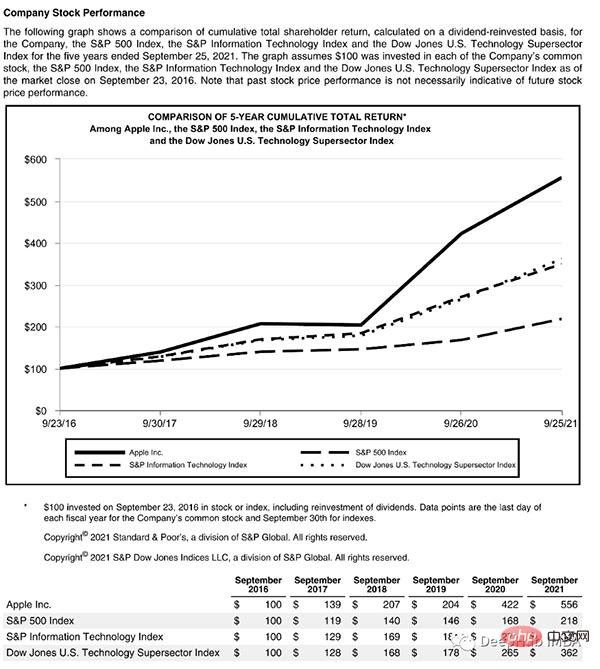
This page starts with a title, has a text block, then a figure and a table, so we need a trained model to recognize these objects. Luckily Detectron is able to do this, we just need to select a model from here and specify its path in code.
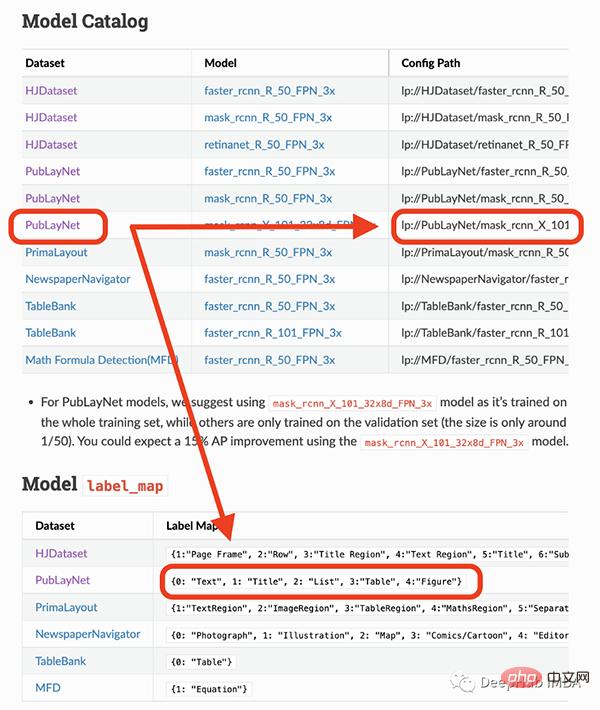
#The model I am going to use can only detect 4 objects (text, title, list, table, graph). Therefore, if you need to identify other things (like equations), you have to use other models.
## load pre-trained model
model = lp.Detectron2LayoutModel(
"lp://PubLayNet/mask_rcnn_X_101_32x8d_FPN_3x/config",
extra_config=["MODEL.ROI_HEADS.SCORE_THRESH_TEST", 0.8],
label_map={0:"Text", 1:"Title", 2:"List", 3:"Table", 4:"Figure"})
## turn img into array
i = 21
img = np.asarray(doc[i])
## predict
detected = model.detect(img)
## plot
lp.draw_box(img, detected, box_width=5, box_alpha=0.2,
show_element_type=True)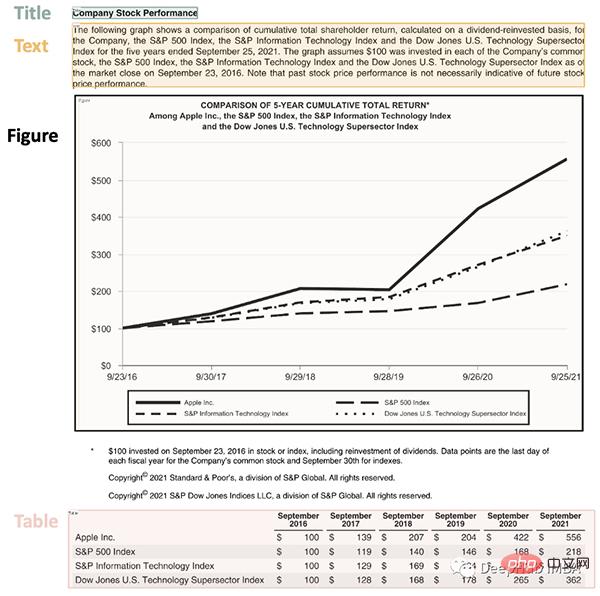
结果包含每个检测到的布局的细节,例如边界框的坐标。根据页面上显示的顺序对输出进行排序是很有用的:
## sort
new_detected = detected.sort(key=lambda x: x.coordinates[1])
## assign ids
detected = lp.Layout([block.set(id=idx) for idx,block in
enumerate(new_detected)])## check
for block in detected:
print("---", str(block.id)+":", block.type, "---")
print(block, end='nn')
完成OCR的下一步是正确提取检测到内容中的有用信息。
我们已经对图像完成了分割,然后就需要使用另外一个模型处理分段的图像,并将提取的输出保存到字典中。
由于有不同类型的输出(文本,标题,图形,表格),所以这里准备了一个函数用来显示结果。
'''
{'0-Title': '...',
'1-Text': '...',
'2-Figure': array([[ [0,0,0], ...]]),
'3-Table': pd.DataFrame,
}
'''
def parse_doc(dic):
for k,v in dic.items():
if "Title" in k:
print('x1b[1;31m'+ v +'x1b[0m')
elif "Figure" in k:
plt.figure(figsize=(10,5))
plt.imshow(v)
plt.show()
else:
print(v)
print(" ")首先看看文字:
# load model
model = lp.TesseractAgent(languages='eng')
dic_predicted = {}
for block in [block for block in detected if block.type in ["Title","Text"]]:
## segmentation
segmented = block.pad(left=15, right=15, top=5,
bottom=5).crop_image(img)
## extraction
extracted = model.detect(segmented)
## save
dic_predicted[str(block.id)+"-"+block.type] =
extracted.replace('n',' ').strip()
# check
parse_doc(dic_predicted)
再看看图形报表
for block in [block for block in detected if block.type == "Figure"]: ## segmentation segmented = block.pad(left=15, right=15, top=5, bottom=5).crop_image(img) ## save dic_predicted[str(block.id)+"-"+block.type] = segmented # check parse_doc(dic_predicted)

上面两个看着很不错,那是因为这两种类型相对简单,但是表格就要复杂得多。尤其是我们上看看到的的这个,因为它的行和列都是进行了合并后产生的。
for block in [block for block in detected if block.type == "Table"]: ## segmentation segmented = block.pad(left=15, right=15, top=5, bottom=5).crop_image(img) ## extraction extracted = model.detect(segmented) ## save dic_predicted[str(block.id)+"-"+block.type] = pd.read_csv( io.StringIO(extracted) ) # check parse_doc(dic_predicted)

正如我们的预料提取的表格不是很好。好在Python有专门处理表格的包,我们可以直接处理而不将其转换为图像。这里使用TabulaPy 包:
import tabula
tables = tabula.read_pdf("doc_apple.pdf", pages=i+1)
tables[0]
结果要好一些,但是名称仍然错了,但是效果要比直接OCR好的多。
本文是一个简单教程,演示了如何使用OCR进行文档解析。使用Layoutpars软件包进行了整个检测和提取过程。并展示了如何处理PDF文档中的文本,数字和表格。
The above is the detailed content of Complete code demonstration of document parsing using Python and OCR (code attached). For more information, please follow other related articles on the PHP Chinese website!